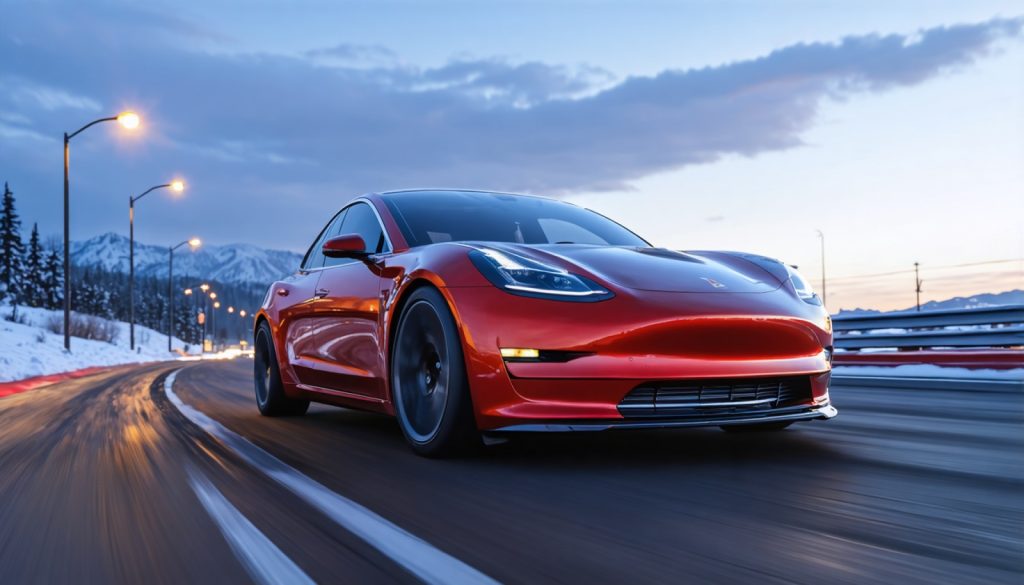
- Chinese EV leaders like BYD, Nio, and XPeng excel with agile R&D cycles, outpacing Western rivals who face longer production timelines.
- China’s automotive speed stems from flexible, software-defined architectures, enabling real-time tech updates and ensuring vehicles remain modern.
- Intel and AMD offer Western carmakers transformative tech opportunities, advocating for standardized architectures to enhance automotive resilience.
- OEMs must leverage AI, modular platforms, and cloud integration to transform vehicles into dynamic, connected entities.
- The shift towards AI-driven Cars-as-a-Service may alter car ownership perceptions, urging Western firms to adapt and innovate.
- HP’s EliteBook Ultra G1i symbolizes the fusion of tech and sustainability, aligning with broader industry transformation strategies.
- To survive and thrive, Western automakers must embrace innovation, technical partnerships, and agility in the evolving automotive landscape.
Amidst an electrifying revolution in the automotive realm, Western carmakers find themselves at a dire crossroads. While automotive titans of yesteryear navigate the labyrinth of legacy systems and protracted production timelines, China’s carmakers are roaring ahead with a startling deftness and a keen grasp of technological potential.
Picture this: Chinese EV giants such as BYD, Nio, and XPeng sprint forward, propelled by streamlined operations and the power of agile innovation cycles. Their R&D timelines whip by at a breakneck speed — a mere nine to 18 months from concept to asphalt. Contrast this with the sluggish evolution in the West, where the norm stretches over half a decade. The writing on the wall is clear: adapt or risk irrelevance by the dawn of 2030.
What lends China this unique velocity is their commitment to flexibility and cutting-edge tech. Their automotive maestros embrace a world where software reigns supreme, building vehicles on pliable, software-defined architectures. This strategy permits last-minute tech upgrades, ensuring cars brim with the freshest tech available at launch. Such sharp adaptability keeps their vehicles’ features from aging before they even hit showrooms — a pitfall often seen in Western models, where early hardware choices tether cars to outdated systems.
Enter stage left: Intel and its cohort of tech innovators offering a lifeline to beleaguered Western manufacturers. Intel, armed with expertise in rapid innovation and technology transitions, stands ready to revolutionize automotive design through photonics. This pioneering tech works magic by using light instead of electrical signals for data transfer, slicing through the limits imposed by conventional copper wiring. It promises lighter cars and a torrent of data speeds, perfectly poising next-gen vehicles for a future dense with AI and sensors.
More than just chip makers, Intel and AMD could invoke the spirit of their PC revolution past. Their earlier strategy of interchangeable processors, which molded the computing landscape, could similarly transform automotive computing. By standardizing architectures—much like the x86 era—they could offer interchangeable chipset solutions, empowering carmakers with choice and resilience against supply shocks.
To thrive, OEMs (Original Equipment Manufacturers) must embrace not just speed, but AI, platform models, and modular architectures. This pivots vehicles from static entities to dynamic canvases, continually morphing with software and AI innovations. Automakers need tech partnerships to jockey ahead, as companies like Intel, Google, and Amazon hold the keys to cloud integration and real-time analytics — the cornerstones of future automotive success.
Fast-forward to a vivid tomorrow where AI-driven Cars-as-a-Service redefine urban mobility. The appeal of owning a car may dwindle as consumers pivot towards smarter, perpetually connected, and evolving transport experiences. Here lies an opportunity of grand scale for Western carmakers, should they seize the moment to transform, innovate, and partner with the tech vanguard.
As the global auto race accelerates, it’s not just about keeping pace; it’s about redefining the course. Through bold strategies and tech alliances, Western automakers have a rare chance to reinvent not only their operations but their very identity in this new automotive epoch. Will they seize this chance, or witness a world where speed, intelligence, and adaptability dictate the leaders from the left-behind?
In the backdrop of this seismic shift, HP has launched their EliteBook Ultra G1i — a next-gen AI powerhouse exemplifying the fusion of technology and sustainability. With features like AI acceleration, a dazzling 2.8K OLED display, and robust security, this laptop is a beacon for professionals seeking the cutting-edge. Built with recycled materials and an eye toward the environment, it’s a testament to the new wave of intelligent design shaping both our devices and the transportation means of the future.
Ultimately, the journey to revitalization is fraught but far from futile. As tech behemoths reach out with lifelines, the path for automakers is illuminated. The time to act decisively is now; the keys to survival are innovation, agility, and an unyielding embrace of the digital frontier.
How Western Automakers Can Drive Forward: Embracing New Tech and Trends
The Evolution of the Auto Industry: Challenges and Opportunities
The global car market is in upheaval, especially as Chinese car manufacturers like BYD, Nio, and XPeng surge ahead in the electric vehicle (EV) space. With their ability to rapidly innovate and adapt, they leave Western automakers grappling with longer production cycles and legacy systems. But what exactly gives Chinese carmakers the edge, and how can traditional Western manufacturers keep pace with this fast-moving sector?
Key Advantages of Chinese Carmakers
1. Rapid R&D Cycles: Chinese automakers can turn a concept into a showroom model in merely 9-18 months, compared to 5 years for Western companies. This agility allows for more frequent updates and keeps technology in their vehicles fresh.
2. Software-Defined Vehicles: By focusing on software as the cornerstone, these companies ensure their vehicles remain up-to-date with the latest tech. This approach allows for easy updates and feature rollouts, much like how smartphones operate.
Bridging the Gap: Opportunities for Western Automakers
1. Tech Partnerships: Western automakers are now leaning heavily on tech giants like Intel, Google, and Amazon to integrate cloud computing and AI technologies into their vehicles. Intel, for instance, is pioneering the use of photonics to surpass traditional data transfer limits, which could revolutionize automotive electronics.
2. Modular Platforms: By adopting modular and platform-based architectures, akin to the interchangeable components seen in the PC industry, Western carmakers can enhance flexibility and supply chain resilience.
3. AI and Vehicle Services: There’s a shift toward Cars-as-a-Service, where AI-driven platforms offer connected and personalized transportation solutions. This trend could diminish the traditional desire for car ownership, as service models offer smarter, more efficient alternatives.
Predictions and Market Trends
– AI Integration: Artificial intelligence will play a critical role in not only making vehicles smarter but also in optimizing urban mobility through real-time data analytics.
– Sustainability and Recycled Materials: Following trends as seen in tech products like the HP EliteBook Ultra G1, sustainability is becoming a significant focus, with recycled materials and efficient designs leading the charge.
Actionable Recommendations
– Adopt Agile Development: Streamline R&D processes to shorten product cycles and incorporate frequent technological updates.
– Leverage Tech Alliances: Forge strong partnerships with technology providers to integrate cutting-edge features and maintain a competitive edge.
– Emphasize Sustainability: Focus on eco-friendly practices in production and design to align with global environmental goals and consumer preferences.
Quick Tips for Automakers
– Embrace Cloud and AI solutions: Integrate cloud-based services to enhance vehicle intelligence and improve user experiences.
– Focus on Flexibility: Develop adaptable vehicle platforms that can evolve with technological advancements.
– Monitor Consumer Preferences: Stay attuned to shifts in consumer behavior towards more sustainable and service-oriented mobility options.
For more insights into automotive trends and technology innovations, consider visiting sites like CNBC and Bloomberg for the latest updates in the industry.
By embracing these strategies, Western automakers can not only keep pace with their global counterparts but also redefine the industry on their terms, ensuring their longevity and success in a rapidly changing market.



